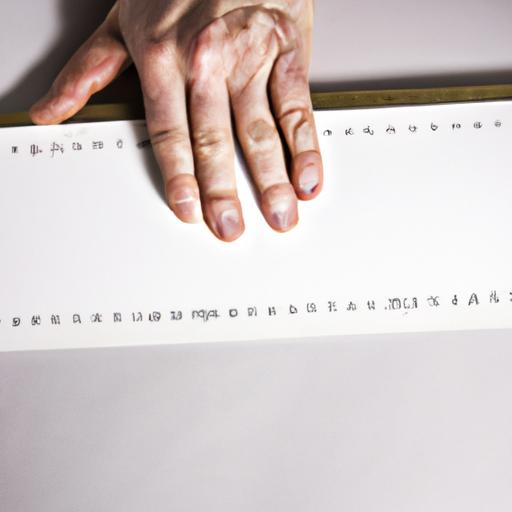How Big is a Standard Piece of Paper?
Table of Contents
As we go about our daily lives, we often come across paper products like books, newspapers, and office documents. But have you ever wondered about the size of these papers? The most common paper size used worldwide is known as the A4 size, but what are its dimensions, and how does it compare to other paper sizes? In this article, we will explore how big a standard piece of paper is and its common uses.
Paper sizes have evolved over time, and many different systems are used worldwide. However, the most widely used system is the ISO 216 standard, which is used in most countries, except for the United States and Canada. The ISO 216 standard defines the A series of paper sizes, which is commonly used for office documents, letters, and magazines.
The A series of paper sizes consists of A0, A1, A2, A3, A4, A5, A6, A7, A8, A9, and A10. Each subsequent size is half the size of the previous one. For example, an A1 sheet is half the size of an A0 sheet, and an A2 sheet is half the size of an A1 sheet. The most commonly used size in the A series is A4, which measures 210mm x 297mm or 8.27 inches x 11.69 inches.
Standard Paper Sizes

Apart from the A series, there are other paper sizes used for specific purposes. For example, the B series is commonly used for posters, wall charts, and other large-format printing. The C series is used for envelopes and is designed to fit the A series of papers. The American paper size system, also known as the Letter system, is widely used in the United States and Canada for office documents.
The Letter system is similar to the A series, but the sizes are different. The most commonly used size is 8.5 inches x 11 inches, which is slightly wider and shorter than the A4 size. This difference in size can cause issues when printing documents or fitting them into folders designed for A4 paper.
Dimensions of a Standard Piece of Paper
The dimensions of a standard piece of paper depend on the paper size being used. As previously mentioned, the A4 size measures 210mm x 297mm or 8.27 inches x 11.69 inches. The A3 size is twice the size of an A4 sheet, measuring 297mm x 420mm or 11.69 inches x 16.54 inches. The A5 size is half the size of an A4 sheet, measuring 148mm x 210mm or 5.83 inches x 8.27 inches.
The dimensions of the B series of paper sizes are based on the geometric mean of the A series size, which means that each size has a different aspect ratio. The most commonly used size in the B series is B4, which measures 250mm x 353mm or 9.84 inches x 13.90 inches.
In the United States and Canada, the Letter size measures 8.5 inches x 11 inches, while the Legal size measures 8.5 inches x 14 inches. Other paper sizes used in these countries include Tabloid (11 inches x 17 inches) and Ledger (17 inches x 11 inches).
Common Uses of Standard Paper Sizes
The A4 paper size is the most commonly used paper size worldwide, and it is used for a wide range of purposes. In offices, A4 paper is used for printing documents, letters, memos, and reports. The A4 paper size is also used for printing magazines, books, and newspapers.
The A5 paper size is half the size of A4 and is commonly used for printing compact-sized books, notepads, and booklets. The A3 paper size is twice the size of A4 and is commonly used for printing posters, charts, and diagrams. The A6 paper size is commonly used for printing postcards, invitations, and small flyers.
Conclusion
In conclusion, the most commonly used paper size worldwide is the A4 paper size, which measures 210mm x 297mm or 8.27 inches x 11.69 inches. The A series of paper sizes follows a simple formula that makes it easy to determine the dimensions of each subsequent size.
Understanding paper sizes is important in various fields, including printing, publishing, and office work. By knowing the standard paper sizes and their common uses, we can properly select the appropriate paper size for our needs. Whether you’re printing documents, designing a poster, or creating a booklet, understanding paper sizes is essential to produce high-quality output.

